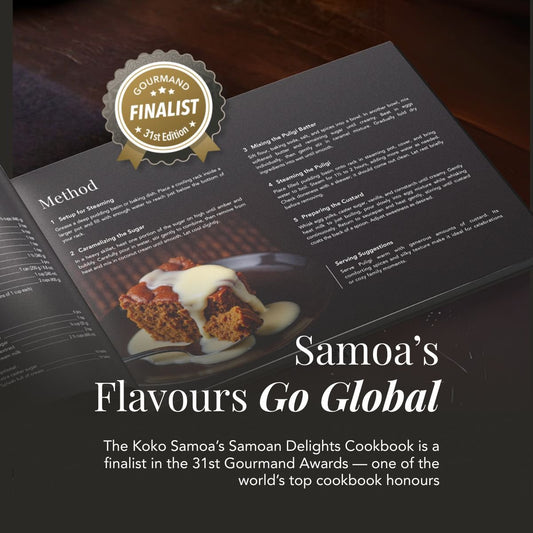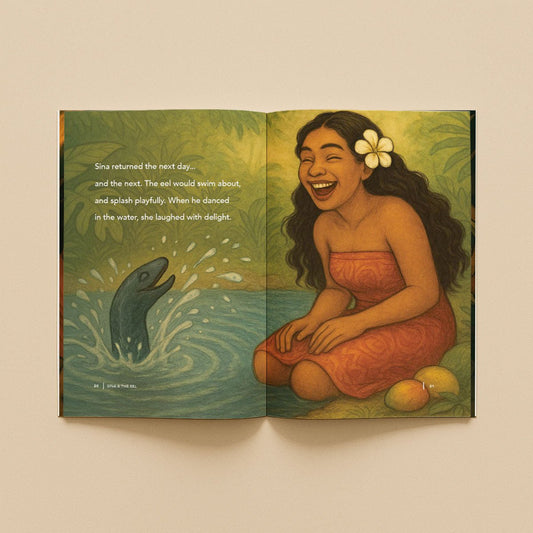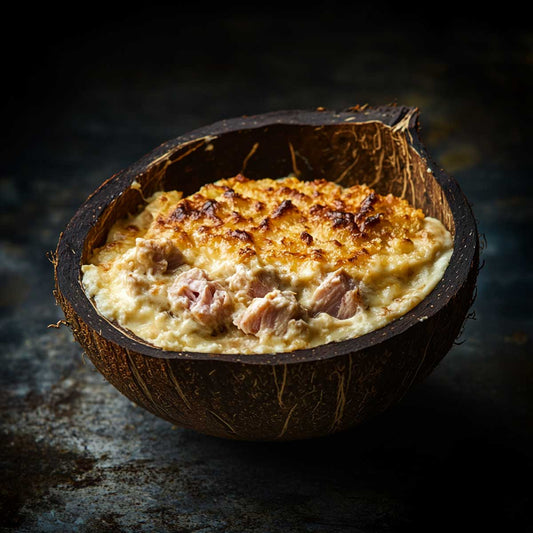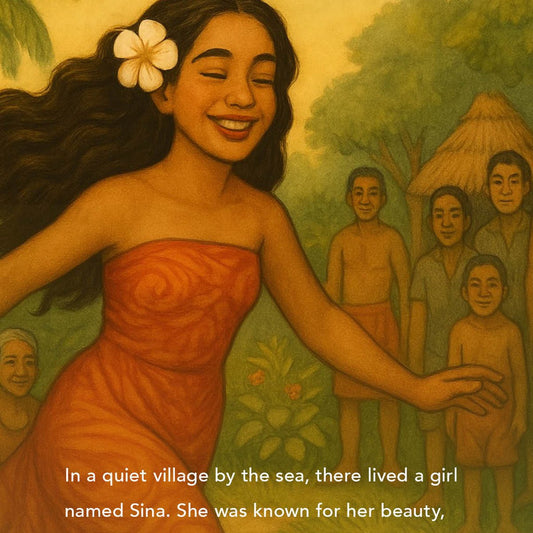The Samoan Physique: Unpacking the Roots of Polynesian Size, Strength, and Cultural Resilience
The image of the Samoan or Polynesian athlete—powerful, large-framed, and exceptionally strong—has become a global phenomenon. From dominating the fields of the NFL and Rugby to headlining the WWE, the impressive physique of the Samoan people is undeniable. The common question, "Why are Samoans so big?" is more than a simple query about stature; it is a fascinating entry point into Polynesian history, unique genetics, and a profound cultural ethos that values strength and robust health.
The answer is not singular. It is a complex tapestry woven from thousands of years of evolutionary adaptation, a historical diet suited for survival, and a cultural perspective on the body that is distinctly Samoan.
The Deep Roots: Ancestral Genetics and the Thrifty Gene
The journey to understanding the Samoan physique begins not in the modern era, but with the legendary Polynesian navigators, the ancestors who sailed and settled the vast Pacific over three millennia ago. These were not random voyages; they were feats of endurance that shaped the genetic makeup of the people.
Evolutionary Adaptation for Survival
The Polynesian expansion was a centuries-long challenge against the world’s largest ocean. Navigators spent long periods exposed to cold, wet conditions on open, unprotected canoes. In such an environment, having a larger body offered significant advantages:
- Heat Retention: A larger body mass, following principles like Bergmann’s Rule, has a lower surface area-to-volume ratio, making it more efficient at retaining heat in cold, open-ocean conditions.
- Endurance and Power: The demanding physical labor of traditional life—paddling, fishing, and communal farming—selected for individuals with naturally muscular, robust frames built for strength and sustained work.
The Thrifty Gene Hypothesis
Modern science has lent credence to this theory with the discovery of genetic variants common in Polynesian populations. The "Thrifty Gene" hypothesis proposes that ancestral Polynesians, who often faced unpredictable periods of food scarcity during long voyages or after settling new islands, developed a genetic predisposition to store energy (fat) efficiently. This ability, a critical survival mechanism in a feast-or-famine environment, enabled their ancestors to survive. However, in the context of a modern, calorie-rich Western diet, this very efficient energy storage mechanism can unfortunately contribute to higher rates of obesity and related health issues.
In essence, the Samoan body is an evolutionary masterpiece, a biological blueprint for thriving in the challenging, resource-scarce environment of the ancient Pacific.
The Cultural Framework: Strength, Status, and Faʻa Sāmoa
While genetics provide the foundation, Samoan culture—Faʻa Sāmoa (The Samoan Way)—provides the context and reinforcement for the value of a strong, substantial build.
A Symbol of Strength and Prosperity
Historically, a large physique was not merely accepted; it was venerated. Size and a robust appearance were cultural markers of:
- Status: Chiefs (Matai) were expected to be substantial. A larger frame symbolized the ability to provide for, protect, and defend the ʻaiga (extended family).
- Health and Provision: In a subsistence society, a full-figured appearance was a visual testament to a family’s successful farming and fishing, signifying prosperity and health in a region susceptible to cyclones and food shortages.
- Power: The physical demands of tribal society, including warfare and heavy communal labor, meant that raw strength was a valued commodity. This cultural appreciation for physical power translates directly to the modern success of Samoans in contact sports.
The Culture of Communal Feast
Food is central to Samoan community life. Feasts (faʻalavelave) are deeply cultural events marking milestones like weddings, funerals, and title bestowals. These events require large amounts of food to be shared lavishly, symbolizing the family's ability to host and provide for hundreds of guests. The traditional diet itself—rich in calorie-dense staples like taro, breadfruit, pork, fish, and creamy coconut milk—was perfectly suited to fuel the highly active, physically demanding lifestyles of their ancestors.
This long-standing cultural link between a large, strong body, social status, and communal food remains a powerful influence today.
The Modern Transformation: Diet, Lifestyle, and New Challenges
While the genetic and cultural foundations for the Samoan physique are ancient, the dramatic shift in modern life presents new challenges that have significantly influenced body size and health outcomes.
The Impact of Westernization and Processed Foods
Since the mid-20th century, the traditional Samoan diet has been heavily impacted by the introduction of cheap, imported, processed foods—often high in sugar, fat, and refined carbohydrates. Staples like white rice, tinned fish, and canned meat (known as pisupo or "pea soup," a term adopted for canned corned beef) have partially replaced traditional, labor-intensive produce like fresh taro and fish.
- Caloric Imbalance: This combination of a "thrifty gene" built to store energy and a modern diet that provides excessive, easy calories creates a severe caloric imbalance.
- Sedentary Life: Just as in many modernized nations, the shift away from manual communal labor, farming, and extensive walking has decreased the average Samoan’s daily physical activity, meaning the robust frame is no longer getting the traditional workout it was designed for.
This complex dynamic explains why Samoans, along with other Polynesian groups, often display a very high average body mass index (BMI), unfortunately leading to elevated rates of non-communicable diseases like Type 2 diabetes and heart disease.
The Rise of the Samoan Athlete
The very features that present modern health challenges—the large bone structure, natural muscle mass, and evolutionary history of strength—also contribute to the phenomenal success of Samoans in global professional sports. When paired with intense, modern training and a specialized diet, that ancestral frame becomes a powerful competitive advantage. Samoan and Polynesian athletes are disproportionately represented in many contact sports, dominating in:
- American Football (NFL): With Samoan men being up to 56 times more likely to play in the NFL than non-Samoan Americans.
- Rugby: Forming the backbone of many top-tier international teams.
- Professional Wrestling: Creating a powerful, generational dynasty of performers recognized worldwide for their imposing stature.
A Call for Cultural Balance and Health
The answer to "Why are Samoans so big?" is a powerful lesson in human evolution and cultural survival. The Samoan physique is a testament to the strength and resilience of a people who conquered the Pacific, carrying the genetic code for survival within them.
Today, the challenge for the Samoan people is finding a path that honors their cultural pride in strength and size—an integral part of Faʻa Sāmoa—while navigating the health risks of modernization. Health initiatives focused on the islands often promote a return to traditional, highly active lifestyles and the consumption of healthier, natural Samoan foods, creating a balance between ancestral pride and contemporary well-being.
The Samoan size is not an accident; it is a legacy—a living monument to a powerful, seafaring civilization.
Explore the traditions and heritage that define the powerful Samoan culture. Our curated collection brings the artistry and quality of Polynesian life to your home. Click here to shop and connect with the spirit of the Pacific.















